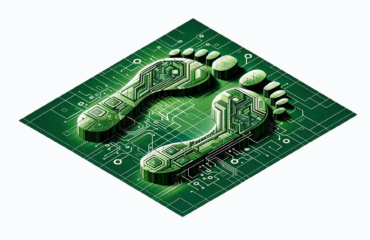Your company’s network is likely supported by a large number of connected endpoints and is both huge and sophisticated. While this is advantageous for your company’s operations and simplifies operational maintenance, it poses security risks.
The problem is that because of how easy it is to roam around in your network, hostile actors who acquire access to it are often permitted to move around and inflict damage. Your company is extremely vulnerable to a data breach due to these network threats.
A company’s capacity to track activity in its IT system and identify actual security incidents is known as threat detection. If a threat is identified, the organization must take mitigating measures to effectively neutralize its ability to take advantage of any vulnerabilities.
Being breached is a horrible scenario, so most firms that value their information will employ educated people and cutting-edge technology to create a protective barrier against potential troublemakers.
The idea of threat detection has many different facets when viewed in the context of a company’s security program. Even the greatest security programs need to prepare for worst-case situations when a threat emerges despite their defense and prevention measures. Today, we will have a look at the most common network security threats and how you can detect and prevent them.
Common Threats to Network Security
Network risks can come in many different forms for businesses. Top network security issues include the following:
Endpoint Attacks
This entails breaking into consumer devices, servers, or other endpoints without authorization and usually compromises them by injecting them with malware.
Malware Attacks
Attacks involving malware can infiltrate networks, steal data, and cause harm by corrupting IT resources. Ransomware attacks come under this category.
Spyware
Spyware is computer software that gathers data about a user without that individual’s consent. It has the ability to track the websites a victim visits and gather private credit card details and credentials.
Phishing
Phishing attacks entail sending phony emails or messages to targets in an effort to obtain confidential material. The emails can seem to be from a trustworthy source, such as a bank or credit card firm, but they are sent by scammers.
DDoS Assaults, or Distributed Denial-of-Service Attacks
DDoS assault is among the most hazardous kinds of security risks. It is a kind of cyberattack in which numerous systems saturate a target with traffic, restricting access to it for authorized users. DDoS assaults can be incredibly expensive and challenging to counter.
SQL Injection and Code Attacks
Many websites take user inputs without validating or cleaning them up. The attacker can then submit a form or conduct an API call while sending malicious code rather than the desired data values. The server runs the code, which enables attackers to take control of it.
Privilege Escalation
When an attacker has gained access to your network, they might utilize privilege escalation to increase their influence. Attackers can escalate their privileges for the same systems either horizontally or vertically.
Threat Detection
The sophistication of your cyber security operation and the technologies at your disposal determine how effectively threats are detected. The demand for automated solutions that can assist with sophisticated threat detection increases as your network environment expands.
Skilled cybercriminals targeting your company can be tricky and challenging to identify. For example, you never know if a state-sponsored perpetrator or hacker group has developed an interest in your company.
There have been numerous high-profile data breaches in the past. Speed is essential for both identifying and reducing dangers. Security solutions must be able to identify risks quickly and effectively to give attackers as little time as possible to target sensitive data.
The bulk of threats should be able to be stopped by a company’s defensive systems because they are frequently familiar with them and know how to counter them. These dangers are regarded as “known” threats. Nevertheless, an organization strives to identify further “unknown” hazards. This indicates that the company has never experienced them, possibly as a result of the attacker’s employment of novel techniques or tools.
Even the greatest defenses cannot always stop unknown attacks, which is why most security firms actively monitor their surroundings for known and unidentified dangers. For the sake of securing data and preventing unauthorized access to information, a secure network is essential.
Keeping a secure network can also help you comply with regulations and safeguard your brand’s reputation. Data breaches, which may be expensive and devastating, are more likely to occur in organizations that disregard network security.
Advanced tools are used by security firms to identify and stop attacks. The security information and event management (SIEM) system was the primary tool used in the conventional security operations center (SOC) to gather threat data and identify threats. Extended Detection and Response (XDR), which can enhance the identification of evading threats, streamline investigation, and allow immediate response to attacks, is becoming more and more popular among enterprises.
A variety of cutting-edge threat protection solutions that make use of artificial intelligence are assisting in detecting threats on the preventive side, even when they do not fit a known malware or attack signature. They consist of ransomware protection, user behavior guidelines, and NGAV. Let’s explore these tools in detail below:
XDR
The advantages of conventional techniques are combined in the new security paradigm known as “eXtended Detection and Response” (XDR). It gathers information from several security silos, similar to SIEM. It permits thorough study and immediate response to dangers found in the environment, just like NTA and EDR. Networking, endpoints, cloud services, email systems, and other resources are all sources of extensive data collection for XDR.
XDR uses AI and threat intelligence to identify risks and create a complete attack story that security teams can readily comprehend and act against. Because it connects with IT systems and security technologies, security professionals can recognize an event, look into it, and take swift action from a single interface.
NGFW
A firewall regulates both incoming and outgoing traffic using established security rules to stop harmful traffic from entering a network. It is essential to network security because a firewall guards against outside attacks. The majority of businesses now employ next-generation firewalls (NGFW), which can stop virus and application-layer assaults.
User Behavior Analytics (UBA)
UBA solutions use surveillance systems to track, gather, and evaluate user activities and data. They can examine previous data logs kept in log management SIEM systems, including network and authentication records. This data enables UBA solutions to distinguish between traffic patterns linked to typical usage patterns and possibly harmful user behavior.
UBA solutions are unable to address risks. Instead, these systems aim to give security teams useful information. Certain systems, however, can be set up to automatically change the authentication level for users who behave strangely.
Threat Intelligence
Threat intelligence is a method of identifying threats by examining signature data from previously observed assaults and matching it to enterprise data. This makes it especially good at identifying risks that are recognized but not unknown. Threat intelligence is widely applied with excellent results in Security Information and Event Management (SIEM), web proxy technologies, antivirus, and Intrusion Detection Systems.
Intruder Traps
An attacker simply cannot resist some targets. Because of this, security teams build traps in anticipation that an attacker will fall for the bait.
A honeypot target that appears to house network services and is therefore particularly alluring to an attacker or “honey credentials” which appear to have user advantages an attacker would require to gain entry to sensitive systems or information are examples of intruder traps that can be used within the organization’s network setting.
An alert is set out when an attacker takes the bait, letting the security staff know that there is strange behavior on the network that needs to be looked into.
NGAV
NGAV products can help in repelling both known and unexpected threats. These solutions actively monitor and react to specific attack strategies, techniques, and processes to accomplish that.
NGAV technologies offer a system-centric and cloud-based solution compared to conventional antivirus technology, which mostly relies on known file-based dangerous software fingerprints and heuristics.
Threat intelligence is combined with predictive analytics supported by AI and machine learning in NGAV technology. These features allow NGAV systems to identify and stop file fewer non-malware assaults in addition to malware. In addition to gathering and analyzing endpoint data to determine root causes, NGAV systems may recognize TTPs and malicious behavior from unidentified sources.
Hunting for threats
A threat hunt permits security experts to actively search their own system, endpoints, and device security for dangers or attackers that may be hiding as yet unnoticed, as opposed to waiting for danger to manifest itself in the organization’s network. Seasoned security and threat researchers typically use this sophisticated method.
Threat detection involves both a technical and a human component. Security analysts who examine trends, data patterns, behaviors, and reports are part of the human element. They can also determine whether abnormal data points to a serious challenge or a false alarm.
The method of detection, however, also heavily relies on threat detection technology. Threat detection lacks a silver bullet—a single tool that can solve the problem. Instead, a group of tools works as a mesh across the entire organization’s network, from beginning to finish, to attempt and catch dangers before they pose a significant concern.
Threat Prevention
Threat prevention in network security refers to the procedures and devices that guard your company’s network. It used to be mostly concerned with the perimeter. Advanced threat prevention necessitates a multilayered, holistic security strategy due to the growing number of threats, including malware and ransomware, which spread via internet messages and phishing attempts. Technologies for enhanced malware protection, extra endpoint security threat mitigation, and intrusion threat detection and prevention could be part of this. Some threat prevention methods are discussed below:
Divide Your Network
Organizing a network into zones according to security needs is a fundamental step in preventing dangers to network security. Subnets inside the same network or virtual local area networks (VLANs), which operate independently of one another, can be used to accomplish this. Segmentation restricts an attack’s possible impact to a single zone and makes it more difficult for attackers to breach and acquire entrance to other system zones.
Defend the Perimeter
The perimeter should be taken into consideration first. Antivirus software and conventional firewalls are no longer adequate. However, NGFWs combine URL filtering, Application Visibility and Control (AVC), Next-Generation Intrusion Prevention System (NGIPS), and Advanced Malware Protection (AMP) to offer a comprehensive strategy.
An NGFW is an essential first step in implementing an integrated system and safeguarding the perimeter.
Protect the Employees
More than 50% of workers nowadays are mobile. Technology must adjust as employees transform the way they operate. Wherever they work, people should be protected by IT security measures. Workers can use a mobile device to work from home, a local branch, or anywhere else.
Mobile device safety has presented the biggest difficulty for the majority of IT teams. Even if it is challenging, businesses will keep using more mobile devices, so it is crucial to handle mobile device security. Mobile device security can be significantly enhanced by technologies like VPNs, identity verification, and gadget trust.
Locate and Quickly Address Issues
There are bound to be security lapses in an organization. Problem-solving is an essential component of threat prevention. Significant visibility and control are needed for this. IT personnel who are prepared and trained in network security and threat prevention are also necessary. Firms should create an incident response strategy and run penetration tests on their existing network solutions to stay prepared for cyber attacks.
Control Internet access with a Proxy Server
Companies should not let network users connect to the internet without your permission. Instead, a transparent proxy should be used to filter all queries and regulate and track user behavior. It is important to ensure that the person making the outgoing connections is a real person and not a machine or other automated system.
Install Security Devices Appropriately
A firewall should be installed on the network edge and at each intersection of network zones. Switches’ and networks’ built-in firewall features should be used if the company cannot implement full-fledged firewalls. Installing cloud services or anti-DDoS devices at the network edge is also important. It is important to think carefully as to where to put strategic devices such as load balancers because they won’t be guarded by your network security system if they are outside of the Demilitarized Zone (DMZ).
Make Secure Passwords
Creating secure passwords is a further crucial step in network security. Passwords ought to include a minimum of eight characters and should include letters, digits, and symbols. These should also be hard to extract, such as the user’s profile or the name of the business.
Micro Segmentation
Security architects use the method of micro segmentation to conceptually divide a network into distinct security segments, specify security policies for each micro segment, and provide services for every micro-segment. Instead of setting up numerous physical firewalls, it enables the deployment of configurable security policies deeply inside a data center using network virtualization technologies.
Using policy-driven, application-level security measures, micro segmentation can help in securing each virtual machine in a network. It enables the application of security policies to distinct workloads, greatly enhancing a network’s defense against intrusion.
Zero Trust Network Access (ZTNA)
According to the zero trust security concept, every network user and entity should be regarded with suspicion. It moves away from conventional security, which solely saw exteriors as suspect. The implementation of numerous safeguards that defend against insider threats and outside intrusions is zero trust security.
Organizations can define and manage granular application access using ZTNA solutions, and they can also provide access in accordance with the least privileges approach. Users are given only the knowledge and permissions necessary to carry out their roles under this notion.
Velocities Scanning
Vulnerability scanners actively and routinely seek out application and network vulnerabilities. Usually, internal IT personnel or outside security service companies undertake scanning. Threat actors look for means of access into a network using vulnerability scanners as well.
The following steps are often included in a vulnerability scanning process:
- System flaws in computers, networking, and communications devices are found and categorized.
- Predictions that evaluate the success of current defenses against a specific threat or attack.
- A report often contains findings that may be further studied and evaluated to uncover ways to strengthen the organization’s overall security.
Final Thoughts
In a nutshell, network security threat detection and prevention is extremely crucial for companies to protect their business, reputation, and employees. You’ll have a better chance of swiftly identifying and neutralizing a threat if you use a mixture of the defensive strategies outlined above. Everything is subject to risk, including security. It will be entirely to you and the tools and procedures you implement to keep your business as safe as possible.




